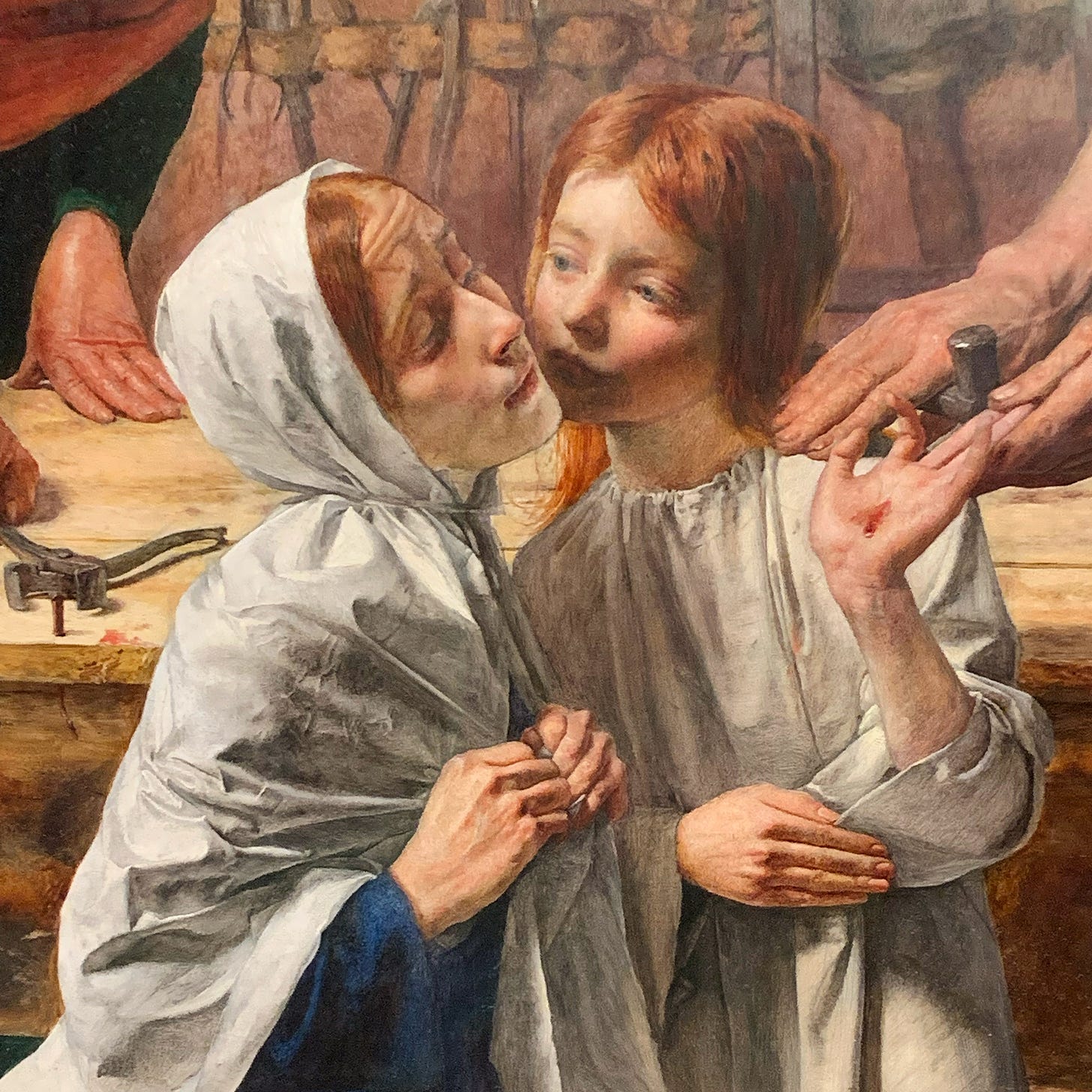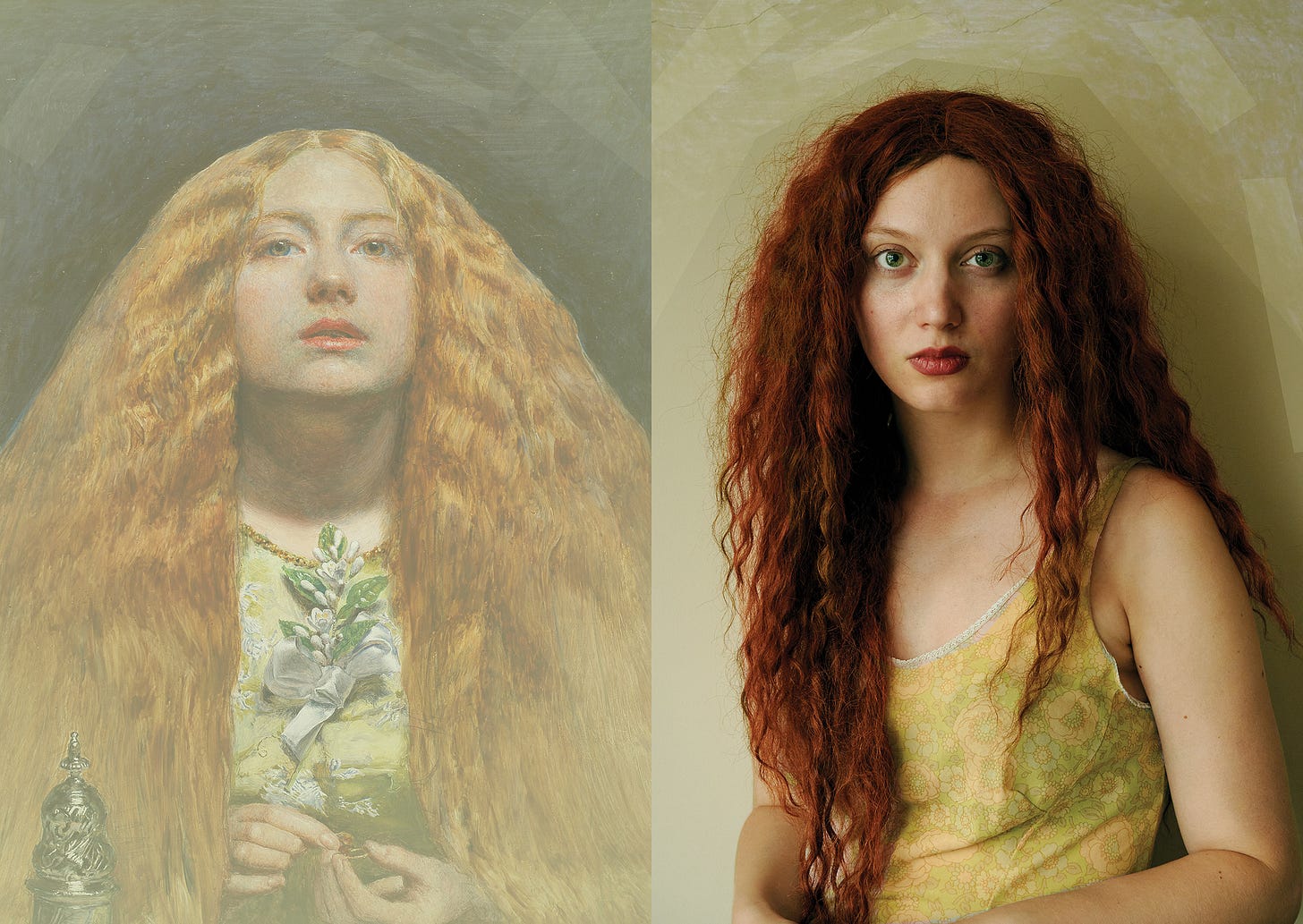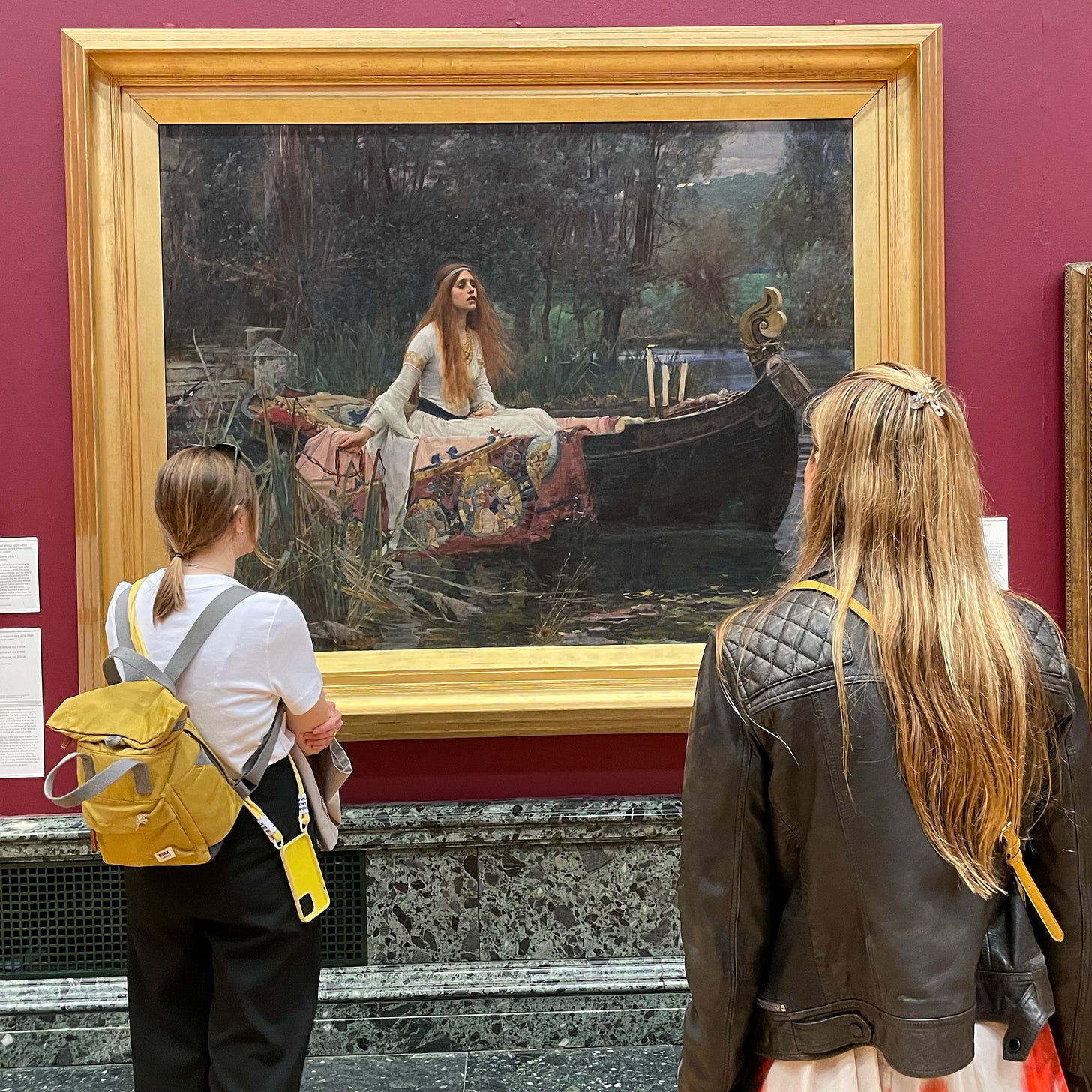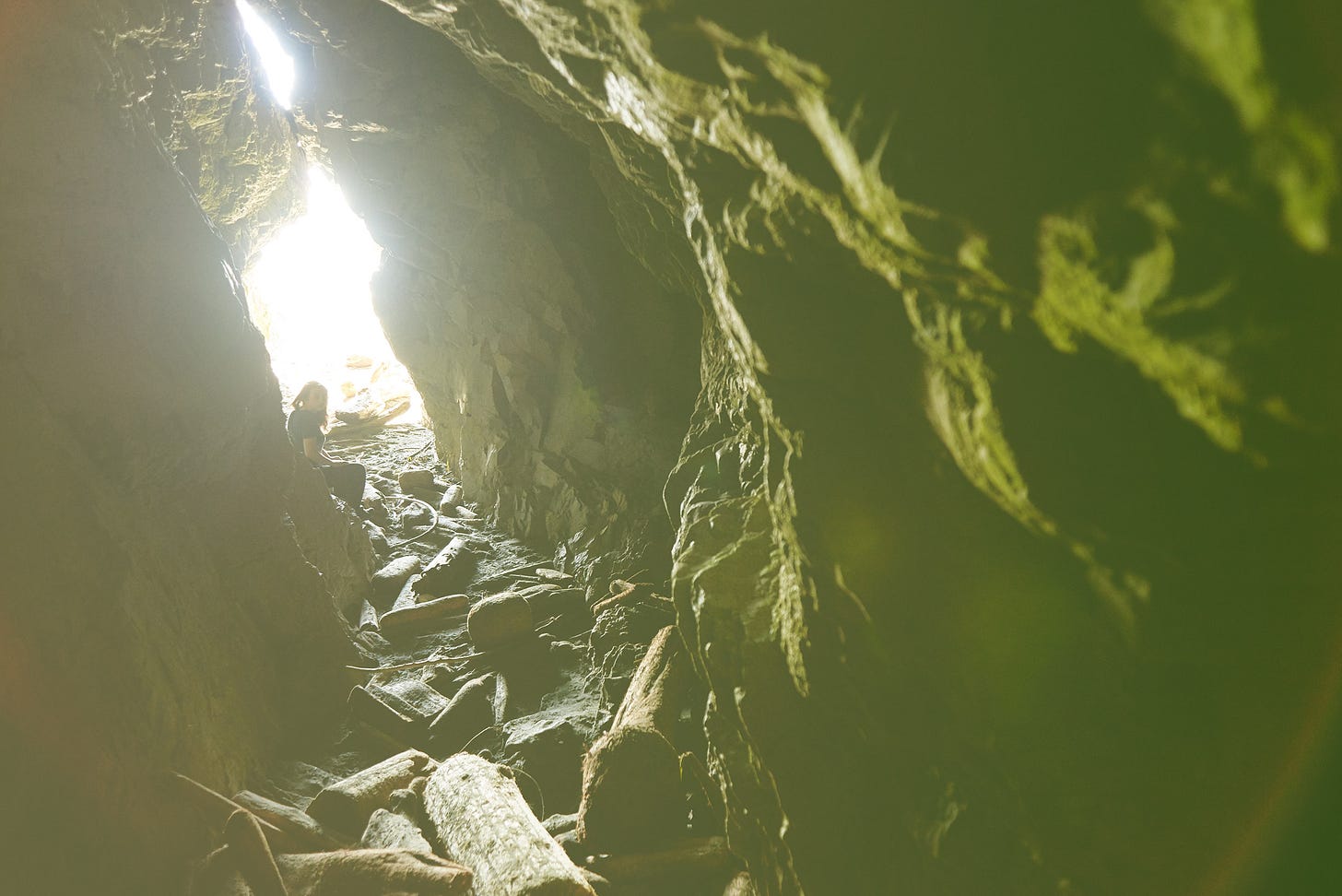Inspired by the Pre-Raphaelites
Why does this 170-year-old romantic art movement resonate with me?
I was 20 years old, midway through my Visual Art degree, living in a small city on the west coast of Canada. My buddy Kevin was in the same program, and we hung out a lot, listening to music and talking about art. He invited me to join him to backpack across Europe. That summer was one of the best experiences of my life. Our days were carefree, full of adventure, and rich with artistic inspiration. At night we slept on trains, on people’s floors, and in youth hostels. By day we made our way through ten countries, met so many warm people from diverse cultures, and must have explored around 20 art galleries.
Our trip began by flying into London, and on our first day we went to the Tate Gallery. At the Tate, we were both stunned — in admiration and awe — as we discovered the Pre-Raphaelites, a group of nature-loving, rebellious artists from 1850s England.
I remember as we first came across Millais’ Ophelia, then Waterhouse’s The Lady of Shalott, I was moved by these paintings in a way I hadn’t been before. These romantic, personal images, painted with extraordinary detail and skill, were deeply inspiring. I loved these.

However, back in Canada at my post-modern art school, these Pre-Raphaelite artworks were not loved. Romanticism was very unfashionable, as was the traditional craft of painting. The Pre-Raphaelites were considered overly sentimental, and they used a medium (figurative painting) long made irrelevant by the invention of photography. Even worse, they seemed to feature idealized female subjects portrayed from a problematic “male gaze”. To varying degrees, I agreed with each of these criticisms. But still there was something in these paintings I was deeply drawn to.
Despite the context of my art school, I spent the rest of my degree making artworks that were inspired by the Pre-Raphaelites (even though this made me a bit of an outsider).
After I graduated I switched focus from fine art to graphic design. I became happily consumed with my graphic design career, and didn’t give attention to the Pre-Raphaelites for a long time.
Over the next couple decades, I ran a graphic design studio, got married, and raised a family. I explored other artistic interests, from electronic music to modern typography.
But then, in the summer of 2022, I returned to England to help my sister as she recovered from surgery to remove a cancerous (but luckily minor) tumour. During that “summer of cancer”, we both felt dangerously mortal. I was also blessed with more free time than I had known for years. In the afternoons, while my sister slept, I visited galleries, rekindling the drive to live in the art that had propelled me through Europe two decades earlier. When I went back to the Tate, and stood once again in front of the Pre-Raphaelite paintings, my interest was immediately re-ignited. With my sister’s health and our inescapable mortality colouring all that I saw, I tuned into the sense of powerlessness and melancholy these beautiful paintings evoked. These historical paintings still resonated with me.
I carried this passionate interest with me back to Canada. I borrowed dozens of huge, beautiful books about the Pre-Raphaelites from the library. I returned to England for two more summers, each time making special trips to Pre-Raphaelite exhibits at Tate Britain, at Oxford’s Ashmolean Museum, at the Birmingham Museum of Art, among others. I even watched a movie and a tv series based on the Pre-Raphaelites, and a few documentaries.
The Pre-Raphaelites were a community of 19th century English visual artists, designers, and writers. They were rebelling against the formulaic painting style of the previous three hundred years, a style that they saw as mindlessly emulating the styles of the Renaissance painter Raphael. These new painters were inspired by the paintings before Raphael, hence calling their movement Pre-Raphaelite.

However, their rebellious relationship to Raphael meant little to me. As I spent more time with the material, I started to distill three main themes in Pre-Raphaelite artworks that were of particular interest to me:
THEME #1 — A more honest observation of wild nature. The Pre-Raphaelites were very intentional, breaking away from the Royal Academy to draw and paint wild nature with detail and realism. They aimed to paint every leaf accurately, in a less idealized manner. (This also applied to their human subjects.) This degree of care is a means of honouring and witnessing the wild beauty of nature.
THEME #2 — Melancholy, yearning, and romanticism. The artworks often depict love and mourning, with subjects who have a gentle exterior but a rich inner life.
THEME #3 — Feminine archetypes. The majority of the Pre-Raphaelite paintings had female subjects — and one might also describe most of the paintings as having a “feminine” quality, even when depicting men.
Recently, I’ve returned to creating images inspired by these historical works, exploring these three themes, primarily using photography. And I have been reflecting on the experiences as I go. What narratives are relevant to contemporary times? What artistic mediums? How can feminine beauty be explored today, as a feminist, and within contemporary perspectives on gender? What ways can artists and models work together, more collaboratively?

Witnesses is a series of my own personal explorations, inspired by the Pre-Raphaelites. My process with Witnesses also, and necessarily, involves my community — many collaborators, and many others who provide feedback and join me in conversation. And you are now an appreciated part of this community. Thank you for joining me.
I usually go to Pre-Raphaelite exhibitions on my own. After I’m in a gallery for a while, my soul escapes from some of the noise of the outside world. My mind gets calmer as I enter into the paintings. And I’m entranced by the beauty. And I wonder, can this journey into the romanticism and environmentalism of the past help us to navigate our contemporary times?
Witnesses is an art project which includes:
this monthly, online project journal (via Substack); and
a semiannual, printed zine.
Subscribe to this online project journal to receive monthly episodes on Substack or to your email InBox. One episode is published each new moon, available for free (or by donation).
Subscribe to the print zine to receive two issues each year, mailed to your address. Each is approximately 44 pages, limited to 200 copies, hand-numbered, printed in full colour onto FSC-certified paper, with offsets purchased to reduce carbon. All subscriptions placed in 2025 will receive issues 1 and 2.
❦
All images and text are by Emrys Damon Miller, unless otherwise noted.











Romanticism just came up today with Ava - she wants to go to Ireland and I said it's romantic in the purest form of the word. I long for that period right now. Thank you for this!